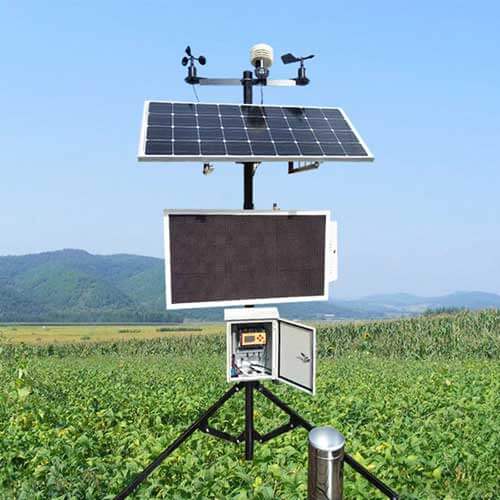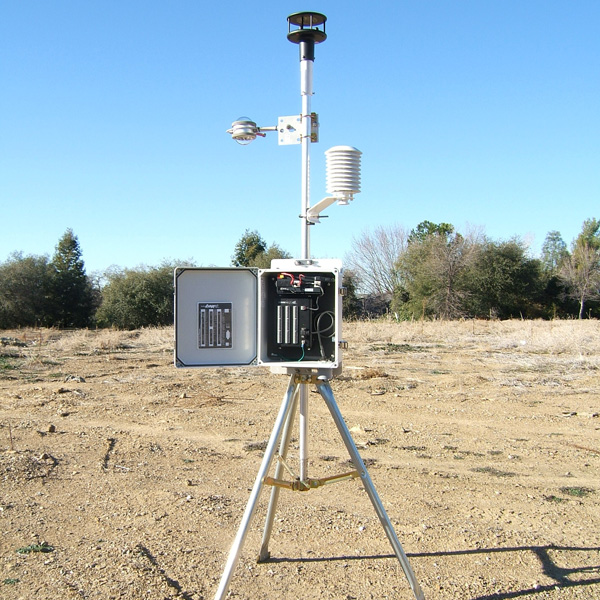Checking Out the Latest Technical Developments in Weather Stations for 2024
Wiki Article
Exploring the Different Types of Professional Climate Terminals for Accurate Data Collection
When it comes to picking the ideal weather condition terminal for data collection, the market supplies a selection of choices customized to different requirements and settings. Allow's discover the nuances of these specialist climate stations to realize their special capabilities and identify the finest fit for certain data collection needs.Digital Climate Terminals
In the realm of atmospheric instrumentation, electronic weather condition terminals stand apart as innovative tools for precise information collection and analysis. These innovative terminals are equipped with sensors that catch a large range of weather criteria such as temperature level, moisture, barometric stress, wind speed, and direction. The information gathered by digital weather condition terminals is transmitted wirelessly to a central console or a computer system for real-time monitoring and evaluation.Among the essential benefits of digital weather condition stations is their capacity to provide high-resolution data with precision and dependability. This degree of precision is critical for different applications, including farming, aviation, emergency situation, and study feedback. Electronic weather condition terminals often come with software program that allows users to visualize the information in various formats like charts and graphs, facilitating simpler interpretation and decision-making.
Wireless Climate Stations
Structure on the capabilities of digital climate terminals, cordless weather condition terminals supply boosted benefit and adaptability in information transmission and surveillance. By using wireless technology, these weather condition stations remove the need for cumbersome wired links, permitting for easy installation in various areas. The wireless attribute makes it possible for real-time data tracking from remote areas, providing meteorologists and climate enthusiasts with immediate accessibility to critical info.Wireless weather terminals commonly include sensors that accumulate information on temperature, humidity, barometric stress, wind speed, and direction. These sensors wirelessly transmit the data to a central console or receiver, where it is processed and shown for analysis. Some progressed wireless climate terminals can even link to the net, allowing individuals to access their weather condition information from another location by means of computers or smart devices.

Prosumer Weather Condition Stations
What identifies Prosumer Climate Stations from standard consumer-grade weather terminals? Prosumer Weather condition Stations bridge the gap between consumer-grade and professional-grade equipment, supplying more innovative functions and greater accuracy than normal home weather condition stations. These terminals are created for weather condition enthusiasts, amateur meteorologists, and tiny organizations that need more precise information than what consumer designs can provide.Prosumer Weather condition Stations typically include a larger variety of sensing units to gauge added atmospheric criteria such as UV index, fallen leave moisture, and dirt wetness. They likewise have a tendency to have a higher level of sturdiness and dependability, making them appropriate for long-lasting outdoor use in numerous ecological problems.


Industrial Weather Terminals
Industrial Weather Stations, likewise referred to as meteorological tracking systems, are specialized instruments created for robust and accurate weather information collection in commercial setups. These stations are tailored to fulfill the unique demands of commercial procedures where accurate weather info is crucial for safety, effectiveness, and decision-making procedures.Industrial weather stations are furnished with innovative sensors that can measure a vast array of atmospheric criteria such as temperature level, moisture, wind speed and direction, barometric pressure, and precipitation (Weather Stations). These stations are typically ruggedly developed to stand up to rough ecological problems typically found in industrial environments
One key feature of industrial weather terminals is their capacity to give real-time information surveillance and evaluation. This permits commercial facilities to expect weather-related risks, optimize operations based upon climate condition, and make certain the safety of employees and tools. In addition, commercial weather condition stations can be integrated into existing industrial control systems for smooth information administration and automation.
Portable Weather Terminals
In comparison to fixed industrial weather terminals, mobile weather condition stations offer adaptability and flexibility for on-the-go information collection in different environmental setups. These small systems are designed to be conveniently transported to various places, making them perfect for area research study, emergency response scenarios, agriculture, building and construction sites, and outdoor occasions.Portable climate stations typically consist of sensors for gauging parameters such as temperature level, humidity, barometric stress, wind speed, and wind instructions. Some advanced versions may additionally feature added sensors for keeping track of her latest blog rains, solar radiation, and UV levels. Regardless of their little dimension, portable climate stations can giving accurate and trusted data equivalent to that of larger, dealt with stations.
One of the vital benefits of mobile weather terminals is their fast release and ease of setup. In general, portable weather condition terminals are very useful devices for professionals requiring portable, accurate, and timely climate details in varied setups.
Verdict
In conclusion, specialist climate terminals come in various kinds such as electronic, wireless, prosumer, industrial, and mobile. By comprehending the differences in between these types of pop over to this site weather terminals, individuals can make informed choices to ensure they obtain the most trustworthy and accurate climate data for their purposes. Climate))))Building on the abilities of digital weather condition stations, cordless weather terminals provide boosted benefit and flexibility in data transmission and surveillance. Some advanced cordless weather terminals can also link to the web, allowing customers to access their weather condition data from another location using computers or mobile phones.
Prosumer Climate Stations bridge the space in between consumer-grade and professional-grade tools, providing even more innovative features and greater precision than common home weather condition terminals. Weather Stations. In general, mobile climate terminals are very useful devices for professionals needing mobile, accurate, and timely weather condition details in diverse settings
By comprehending the distinctions in between these kinds of weather stations, individuals can make enlightened decisions to ensure they get see here the most exact and reputable weather data for their purposes.
Report this wiki page